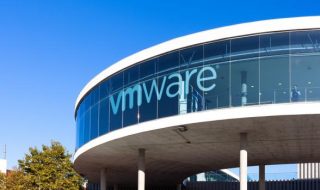
Security is arguably one of the most important factors in software development – thanks to the rise of cybercriminals. According to Forbes, a culture of security begins at the top. Even though it is impossible to create a completely secure application, developers can use different techniques to protect their software. Usually, application security starts at the development phase. This post will introduce five tips that help enhance software security.
Build Security in Every Phase of the Software

Avoid relegating security to the last step. Instead, embrace a mindset that favors security in every step of the software supply chain. This approach aligns well with cloud-native development, Kubernetes and containers. Introducing automation of container security early (ideally from day one) in the CI/CD pipeline is crucial. Integrating security automation at important points throughout the pipeline helps with software deployment and safe updates.
Security should not be the last check, or something software developers prioritize once an issue arises. Rather, it should be holistic. Deploying software requires the implementation of security capabilities throughout the software supply chain. For instance, during the build phase, developers should apply admission controllers as a way of blocking deployments that do not meet the pre-configured policies. This helps to complement the deployment phase.
Include Sensors to Avoid Security Scanning in the SDLC
Scanning is an extra step in the software release cycle and eventually results in slow deployment. This implies there is a point in time when no scanning is taking place to capture what is happening. Fortunately, RASP (Runtime Application Self-Protection) and IAST (Interactive Application Security Testing) tools embed sensors that are fundamentally always on in an application. These help avoid security testing as a different phase in the software development Life cycle by infusing it throughout the process.
Vendors who offer RASP and IAST are capable of extending protection to production. As such, customers can deploy software even when a vulnerability is yet to be fixed. The vendors introduce full lifecycle protection as well as management and implementation of one solution. Such an approach provides the ability to rapidly respond to exploits and offer closed-loop feedback regarding the exploit to developers concurrently. Not all vulnerabilities can be resolved before deployment. So, the same degree of control must exist in production environments after deploying the software. Vendors that provide RASP and IAST solutions cater to the full SDLC.
Consider embedding controls that reside within the asset you wish to protect. In applications, most security solutions are capable of scanning or reviewing software (SAST or static analysis) or the application itself (DAST or dynamic analysis). These solutions are incomplete and cater to specific segments in the SDLC. To cater to the full SDLC, DevOps employ security solutions such as RASP and IAST that reside in or close to the application as it runs.
Move and Scale Security Controls

As the software evolves and scales, security measures must also evolve and scale accordingly. Failure to do so risks the performance and stability of the software. This is especially true for cloud-based environments where infrastructure and applications are deployed, scaled and moved regularly.
The efficacy of security controls should remain the same regardless of deployment type. It should work smoothly whether the application is deployed on a physical box, container or VM. As well, it should work irrespective of the underlying infrastructure – be it a public cloud, private data center or hybrid.
Avoid Manual Management of Clusters and Default Configurations
Automation is essential since it is crucial for secure deployments. Sometimes, it can be enticing to perform quick fixes manually. However, it is often a bad idea from a reliability and security point of view. Avoid managing the state of clusters manually. Manually editing deployments and services to make quick changes to small things such as variables or container images is very easy. However, the process can quickly result in technical issues since it can result in uncertainty about the state of the cluster. Also, when another individual who is not aware of the manual changes makes additional changes, eventually, it may result in confusion and possible outages.
Please do not depend on the default configurations since they are not always optimized for security. Usually, default configurations are optimized for operational success instead of security. So, always keep that in mind. For instance, network segmentation policies are not applied on deployments; thus, every asset can communicate with any other asset. So, using the default settings during deployment leaves the organization very vulnerable.
Fine Tune Security Elements in the Environment

Various open-source orchestration platforms offer various security and reliability features meant for deploying, scaling and managing applications. The key is to ensure they are properly configured and managed over time. Some security vulnerabilities arise from misconfigurations or a lack of a properly hardened environment. For instance, avoid leaving sensitive ports exposed or not configuring role-based access control. To secure the infrastructure, there are a few steps administrators can embrace.
Limit the Use of a Privileged Container to when it is Necessary
The approach will give access to anyone with container access with full privileges in the node. This helps control the blast radius. Some orchestration platforms provide objects for managing access and deployment of containers with elevated privileges.
Ensure Appropriate Logging
Put in place an audit server to log access to the various nodes. As well as log the various commands executed on the server.
Perform Network Isolation
This ensures services within each namespace are accessible in line with the set network rules. It further isolates and secures tenant services from one another.
Consider Service Mesh Technology
Embrace technologies that allow teams to automate authentication/authorization and TLS services in software.
Integrate a Storage System
Lastly, put in place a storage system that supports encrypted volumes and persistent volume access authentication and authorization. A secure storage system will extend the security model beyond isolation by ensuring only authenticated tenants get appropriate access to the storage volume.
Conclusion
Secure deployment is possible by leveraging the five tips outlined above. These tips bring on board essential stakeholders, which help improve software security. With the right tools, developers can detect and correct vulnerabilities in software before deployment.



